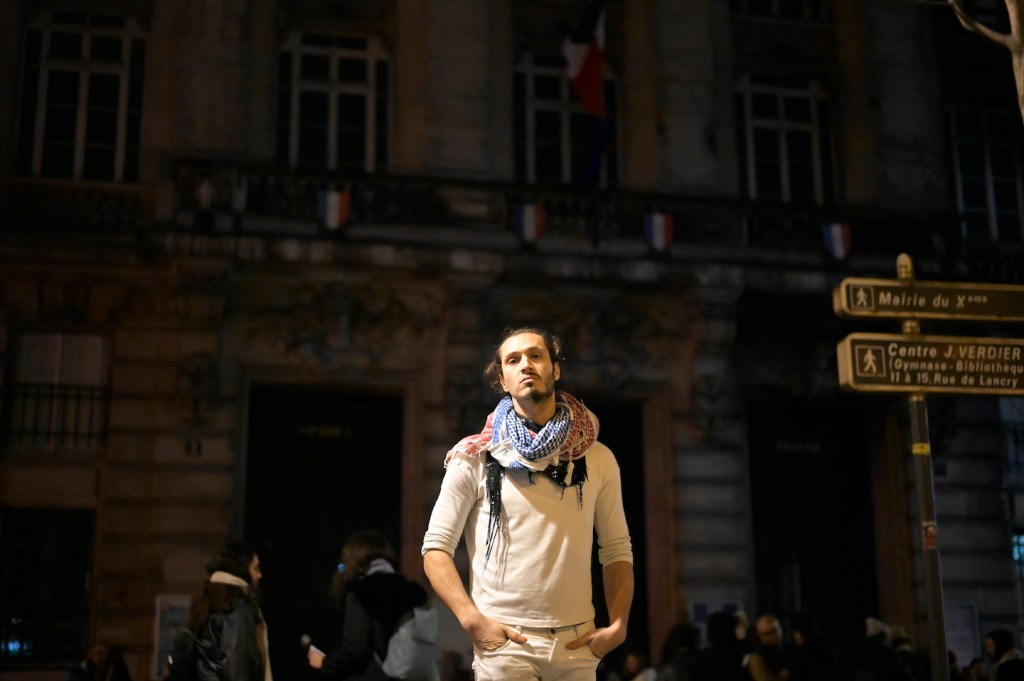Image: From a defunct Twitter account.
Whether it’s instagramming cute pictures of kitties and guns, little Syrian kids playing with a head, or a flood of memes—social media has become part of the modus operandi of jihadist groups operating in Syria or Iraq. Lately, ISIS has promoted a hashtag campaign, and unlike the failed NYPD hashtag, it’s probably working.
#AllEyesOnISIS is attracting global admirers who’ve posted and retweeted everything from memes, shout-outs to their favourite martyred fighters, to the images of handwritten notes celebrating ISIS from all over the world. Those images show to the popularity and online reach of the jihadist network giving Al-Qaeda a run for its money as the global name for Islamic militancy.
Videos by VICE
Pictures have come in everywhere from Indonesia, Saudi Arabia, Japan, to Philippines—and western countries aren’t immune to the campaign, either. For example, one picture is clearly taken in front of the Coliseum in Rome.
European countries like Switzerland, Holland, Belgium, Italy and France are repped by ISIS supporters.The pictures range from a single hand in-frame holding up the letter of support, to blanked out faces in front of known public spaces. One image shows notes strewn across a Saudi military uniform in an apparent show of armed solidarity.
Another picture of note, shows a supporter with his personal message to ISIS in what looks like the New York City harbor, which brings up obvious memories, with another coming in from North Carolina of all places. While I’ve yet to see Canadian representation, Australia has a few contributors. These images of support from North American or European sympathizers are unmistakably posted to make westerners nervous about domestic terrorism, even if the prospects of an actual threat remains to be seen.
According to Evan Jendruck, an analyst at IHS Jane’s Terrorism and Insurgency Centre, the new ISIS hashtag is par for the course when it comes to an organization that’s been slowly designing their targeted social media campaign to pair alongside their military operations.
“The AllEyesOnISIS twitter campaign isn’t itself overly significant; the group undertook the well-planned campaign in an attempt to underline its online grass-roots support base and further spread its extremist views,” said Jendruck in an email.
Though it likely didn’t expand the ISIS following significantly, Jendruck believes part of the strategy is to show off the support it already has.
“By implementing such social media campaigns, ISIS is not only encouraging an ‘online jihad’ from ISIS militants and supporters, but also attempting to show the West and the rest of the world its strong support base,” he said. “Yet, the actually level of support is indeed questionable.”
Whether or not intelligence agencies are concerned about these posts, and the ISIS fans living among their citizens, remains to be seen. It’s impossible to confirm whether these are staged photographs or if contributors are limiting their appearance in the tweets to avoid detection. But as Jendruck put it, “it is a big jump from sending out a pro-ISIS tweet to becoming a national security threat.”
There have also been questions surrounding how notorious and successful the ISIS “Twitter Storms” have actually been—and how much is drummed up media attention; a byproduct of the sensational tweeting rather than an actual reflection of recruitment numbers and support.
Jendruck pointed me to a recent War on the Rocks data study, analyzing the online patterns of ISIS tweeting. According to War on the Rocks, the hashtag first appeared in mid-June when @Ansaar999 released the English equivalent to a larger campaign that includes the Arabic hashtag “#حملة_المليار_مسلم_لنصرة_الدولة_الإسلامية,” which roughly translates into “a billion Muslims who Support ISIS.”
Using the period of June 19 to 21, they found that two thirds of all the #AllEyesOnISIS tweets they measured (20,000 to be precise), happened within the first seven hours of the hashtag being rolled out. The top 50 tweeters were responsible for 20 percent of all tweets, averaging 126 tweets per person. Judging from the data, it suggests there is a concentrated effort by activists and operatives within ISIS to strong-arm the social media operation rather than relying on user engagement.
Either way, the extensive and continuing use of Twitter by ISIS militants suggests a grander motivation beyond cultivating new admirers the world over.
Crafting the narrative of your battle prowess is one of the oldest PR moves in the book of war: to ISIS Twitter is clearly part war paint and intimidation. And the many Iraqi soldiers reportedly fleeing from the battlefield (not the Kurdish peshmerga, though), might be aware of these brutal images proliferating the Internet. Same goes for the images of supposed Italians in Rome or Americans in New York: ISIS is projecting their reach, realistic or not.
One underlying potential strategy for social media is intimidation. By live-tweeting the execution of Shiite soldiers (now being called a war crime), or the several beheaded enemies of ISIS displayed as the spoils of war, ISIS members are beating their chests as widely as possible.
It’s no secret the Iraqi government was worried about the Twitter and Facebook accounts of ISIS fighters, and used internet blackouts and targeted suppression of social media to prevent ISIS use.
Ultimately, with the Iranian Quds Force moving into Iraq and the lingering flirtations around western intervention, the new Iraq war is far from slowing down. And with it, expect more ISIS hashtags, pictures of US military swag they’ve stolen from the Iraqi army, and tweeted images of support.
“ISIS is acutely aware of the impact social media can have on its movement,” Jendruck said to me. “More so than any other terrorist group to date. What we are seeing now is only the beginning.”



